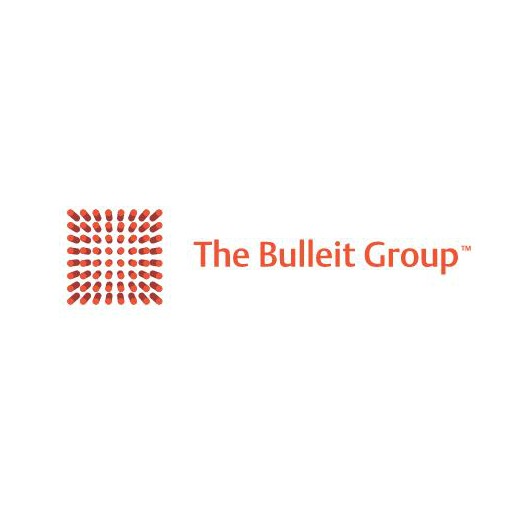The Bulleit Group 12 Oct 2017 // 1:25PM GMT

Every once in awhile, a company makes headlines for something so tone deaf that you wonder, “How did so many people think this was a good idea?” or even worse, “How did so many people not realize this was a bad idea?” You begin to run through the many levels of approvals and hands the news passed through to get to that headline.
Snapchat’s accidental blackface filter is a good example of this. Conceived as a tribute to Bob Marley, the face filter blended users' faces with that of the Jamaican singer-songwriter and was perceived by many as culturally insensitive, unintentionally racist and largely offensive to African Americans.
More recently, Silicon Valley startup, Bodega suffered from intense criticism for its culturally insensitive concept that raised millions of dollars in early-stage funding. The idea was to disrupt the traditional mom-and-pop bodega—a loanword from Spanish for convenience store—by replacing it with app-connected vending machines.
Like Snapchat’s Bob Marley filter, it's hard to imagine that Bodega went from ideation to fully-funded startup without someone stopping to ponder whether the company was solving a real problem for local communities—and moreover, whether its name was appropriating Hispanic culture. But this is exactly what happens without diversity.
Without diversity, we can only have a narrow perspective. We can only make decisions based on our own experiences, and so we limit ourselves and our possibilities for success. Many Silicon Valley startups pledge to change the world, but the reality is that they are changing their world. In Bodega’s case, the millennial coastal elites, thus capturing the zeitgeist of today’s tech investments.
While this demographic might be attractive for some reasons, it’s foolish, not only from a business perspective, for companies to pigeonhole themselves (and their profits) into a subset of the American population. Diversity and inclusion need to provide a business benefit or necessity. Otherwise, the incentive to do so is not sufficient to warrant change. Luckily, we’re beginning to see that business benefit take shape.
Rihanna’s newly launched makeup line, Fenty Beauty, hit the shelves last month with rave reviews from both the beauty industry and customers. The singer-turned-beauty mogul spent two years developing an inclusive line of 40 different shades of foundations, concealers, highlighters and contour sticks for women of all ethnicities and colors. Rihanna specifically focused on "a wide range of traditionally hard-to-match skin tones" according to her website. Not only were women of ethnic minorities represented in the line, but also women with pigmentation disorders like albinism.
Her approach was refreshing in that her beauty products were created to be entirely inclusive from day one—not after years on the market or as part of some marketing ploy. Fenty Beauty is personal: it marks the first time women of all backgrounds felt included and valued in the beauty industry. As a result, Fenty Beauty has been selling out online and in stores since its launch.
The thing is the numbers back this up. According to a report from the University of Georgia’s Selig Center for Economic Growth, black buying power is estimated at $1.2 trillion and is projected to reach $1.4 trillion by 2020, making it the largest racial minority consumer market. Hispanics spend more per day than the average American, and their buying power is growing faster than the rest of the U.S. Asian purchasing power has increased more than 200 percent since 2000, the biggest percentage increase of any American minority group.
But while numbers are important, diversity needs to be much more than statistics. Portions of a pie chart don't determine whether a company's workforce is inclusive, nor can they effectively dictate business strategies.
Far too often, companies believe they can simply lift their business model and shift it into a new market—whether an emerging region or a new demographic—and expect the same results. While this might work to some limited extent, a full understanding of the culture and ethos of these new groups is what will lead to long-term business success.
Inclusion is nuanced. It goes beyond traditional demographics, beyond birthplace, skin color and gender, beyond surveys and diversity reports. Rather it encompasses a multitude of perspectives and experiences to allow for positive change. Fenty Beauty was a hit because the company’s creator saw a void in the industry and realized that voices were not being heard. Bodega was not because the founders lacked an understanding of how bodegas are an integral part of Hispanic communities. Inclusion is about embracing all people and giving them a sense of belonging.
So this begs two questions, what type of business do you want to service? And who are the people that you want to be servicing? If your audiences are diverse, then you and your company's leadership and values need to implicitly share their understanding.
Just as we need to build businesses from the ground up with a strong moral compass towards total inclusion, PR and marketing agencies should be pushing the companies they work for to be inclusive—not as a PR stunt but for the value returned. As communicators, we should be leading the change. Rather than talking about how diverse we are, we should be focused on telling the story about how without diversity the businesses we support would suffer. Releasing reports with incremental changes in statistics cannot be equated to building an authentic and open community in your workplace.
To avoid fiascos like Snapchat's and Bodega's, diversity and inclusion must be baked into a company's mission and ethos. Like Fenty Beauty, those are the businesses that will thrive for generations. Once we allow employees and leaders of all backgrounds to feel comfortable sharing their unique strengths and perspectives, we can begin to tell their stories without pandering to the trendiness of the same old diversity storylines.



































.jpg)














